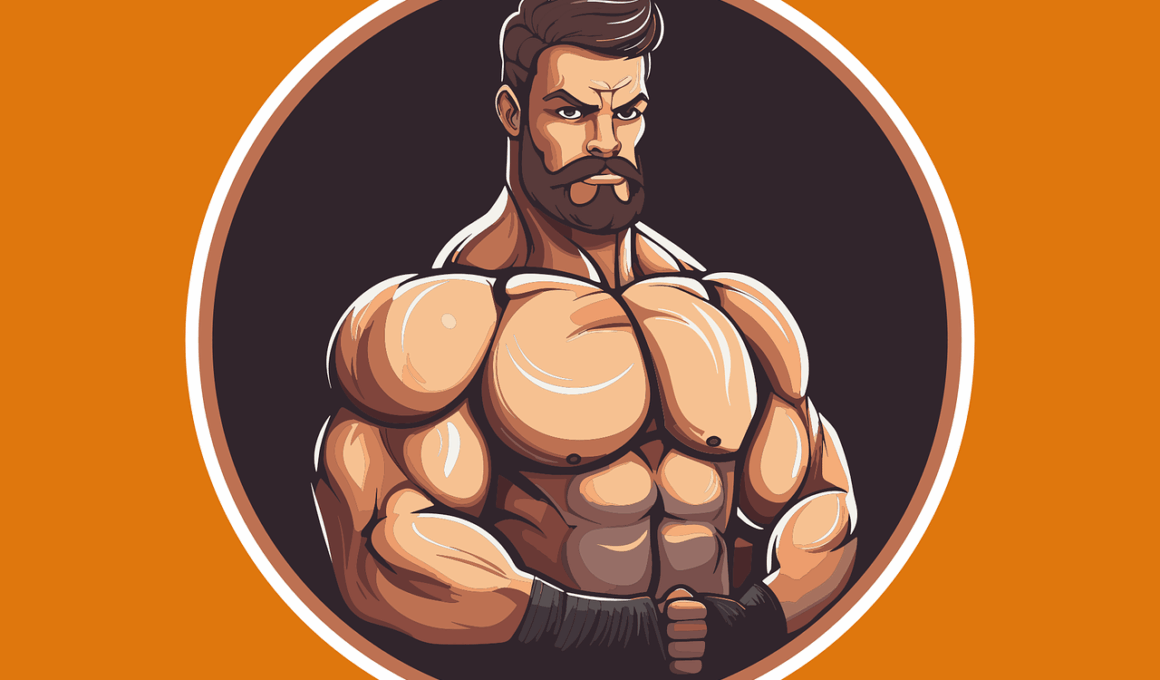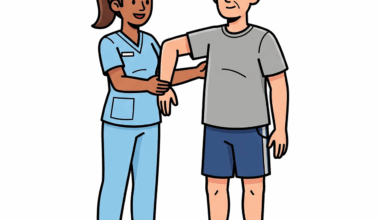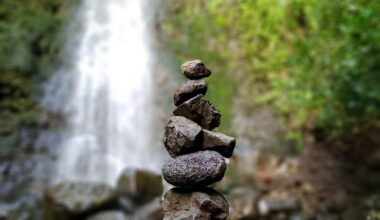Lighting Techniques for Bodybuilding Competition Photography
Photographing competitors in bodybuilding competitions requires mastering light to highlight the toned physiques. Proper lighting emphasizes muscles, ensuring every defined curve and shadow is captured perfectly. Natural light can sometimes yield beautiful results, but mastering studio lighting is often essential. This article will explore several key lighting techniques that can greatly enhance your photographs. One important approach is using a three-point lighting setup, which includes key, fill, and back lights. This creates dimension on the subject, making the body appear more sculptured and appealing. Experimenting with different lighting positions can also add various effects, enabling dynamic content in your shots. You should try to manipulate light angles, intensity, and diffusion to achieve the best results. Also, consider using modifiers like softboxes or reflectors to soften light and minimize harsh shadows. Practicing these techniques before the competition will give you the experience needed to adapt to the specific environment of the event. Research other photographers’ work to gain inspiration and insight into their lighting choices during competitions. Combine different methods for the best outcome and elevate your bodybuilding photography portfolio.
Understanding the Importance of Shadows
Shadows play a vital role in bodybuilding photography by accentuating muscle definition and structure. Properly managed shadows can create depth and enhance the visual appeal of a photograph, making muscles appear more prominent. Using hard light can produce striking shadows that emphasize the contours of a competitor’s physique. However, balance is crucial; too much shadow can obscure details and diminish the image quality. Find the sweet spot by adjusting your light placement to achieve the desired contrast without overwhelming the subject. In addition, consider the directionality of your light source. Placing the light at a 45-degree angle can generate softer shadows, providing a more flattering look that retains detail in the muscles. Pay attention to the competitor’s pose and adjust your lighting accordingly. For example, if a contestant is flexing specific muscle groups, angle the light to enhance those areas. Learning to manipulate shadows effectively will result in dramatic, eye-catching competition photos that showcase the hard work of each athlete. Always review your images on-site and be willing to adapt your technique as necessary to optimize your lighting choices.
Incorporating color gels into your lighting setup can significantly transform the aesthetic you create in bodybuilding competition photographs. Color gels, which are transparent filters placed on light sources, can add an array of hues that invoke mood or atmosphere in images. For instance, a warmer tone can create a more inviting feel, while cooler colors might convey energy and strength. Combining different gels can produce stunning effects, helping to tell a story through your photographs. It’s imperative to keep in mind that less is often more; subtle applications can enhance your images without overwhelming the subject. Also, experiment with lighting intensity when using gels, as darker colors may absorb more light. It’s instrumental to test out your setup before the event to determine the right balance of color and exposure. Additionally, communicating the desired aesthetic with the competitors can yield fruitful results. They may prefer certain hues that match their posing, suit their tan, or highlight their unique features. Ultimately, with creativity and practice, you can master the art of color lighting for unforgettable bodybuilding photography.
Utilizing Equipment Effectively
To achieve professional results in bodybuilding competitions, investing in the right equipment is indispensable. A DSLR camera with adjustable settings allows you to control exposure, ISO, and aperture effectively. These settings are crucial for optimizing image quality and detail, making it essential to understand how each element affects your shots. Moreover, when capturing competitions, always opt for fast lenses with wide apertures. This ensures you can shoot in low-light conditions often found in indoor venues. A lens with a low f-stop will enable you to achieve sharp images while creating a pleasing background blur that keeps the focus on the athletes. Besides the camera and lens, consider using a sturdy tripod or monopod for stability. This helps prevent camera shake, especially at lower shutter speeds. Employing a reflector is also beneficial in redirecting light to soften shadows on competitors’ bodies. Also, having spare batteries and memory cards is essential for prolonged events where switching photography settings is frequent. Being prepared with the right equipment enhances your overall shooting experience and results.
Capturing dramatic poses in bodybuilding photography demands an acute awareness of timing, particularly regarding competitors’ movements. Athletes will often strike poses that showcase their muscular definition, so understanding peak moments allows you to snap the best photographs. Confidence translates beautifully into pictures, making it imperative to build rapport with the competitors. Encourage them to be expressive and engage with the audience throughout the event. To master timing, practice with burst mode on your camera, which takes several shots in rapid succession. This technique captures fleeting moments, ensuring you don’t miss critical expressions or poses. Furthermore, anticipating a competitor’s movements is vital in capturing the decisive moment. Pre-visualizing their actions can help you find the perfect angle, creating more impactful compositions. Consider asking competitors about their routines and movements beforehand, allowing your knowledge to aid in your timing. Also, maintaining a good position relative to the stage is crucial; knowing when to reposition based on the flow of the competition is equally as important. Ultimately, practicing to fine-tune your timing will lead to more spectacular results and truly elevate your bodybuilding photography.
Post-Processing Techniques
Editing plays a significant role in the final quality of bodybuilding competition photographs. Post-processing helps refine your images, enhancing elements like contrast, brightness, and saturation for more striking visuals. Utilizing software such as Adobe Lightroom or Photoshop can provide the necessary tools for broadening your creative options. Start by adjusting the exposure to ensure each photograph reflects accurately the lighting conditions utilized during the event. Then, experiment with contrast to highlight muscle definition, giving a more three-dimensional appearance to the subjects. Consider fine-tuning colors to emphasize the hues added through gels or natural skin tones, avoiding oversaturation to maintain realism. Sharpness adjustment is also crucial; highlighting subtle details in the muscles will attract the viewer’s eye more positively. In some cases, cropping may be necessary to create a more focused composition, removing distracting elements from the frame. Lastly, always ensure to save your edits in a way that maintains a backup of the original image. Post-processing offers endless opportunities to elevate your photographs, resulting in a polished portfolio that stands out in the competitive world of bodybuilding photography.
Finally, marketing your work is essential in establishing credibility as a bodybuilding competition photographer. Creating an online portfolio through platforms such as Instagram or a personal website allows potential clients to view your work and reach out for collaborations. Highlight your best images, paying special attention to your unique lighting techniques and editing style. Consider using hashtags related to bodybuilding, photography, and competitions to increase visibility in relevant communities. Networking with athletes and event organizers provides valuable opportunities to build your reputation. You might also explore partnerships with fitness brands or sponsors willing to promote your services. Attending competitions not only helps in refining your craft but also facilitates meeting like-minded individuals in the industry. Listen actively to feedback and find ways to adapt your style to suit the demands of clients and competitions. Sharing behind-the-scenes content and experiences can engage your audience, giving potential clients a glimpse of your professional journey. Building relationships through genuine communication will enhance your visibility in the community, ultimately establishing you as a go-to photographer in bodybuilding competitions.
Capturing dramatic poses in bodybuilding photography demands an acute awareness of timing, particularly regarding competitors’ movements. Athletes will often strike poses that showcase their muscular definition, so understanding peak moments allows you to snap the best photographs. Confidence translates beautifully into pictures, making it imperative to build rapport with the competitors. Encourage them to be expressive and engage with the audience throughout the event. To master timing, practice with burst mode on your camera, which takes several shots in rapid succession. This technique captures fleeting moments, ensuring you don’t miss critical expressions or poses. Furthermore, anticipating a competitor’s movements is vital in capturing the decisive moment. Pre-visualizing their actions can help you find the perfect angle, creating more impactful compositions. Consider asking competitors about their routines and movements beforehand, allowing your knowledge to aid in your timing. Also, maintaining a good position relative to the stage is crucial; knowing when to reposition based on the flow of the competition is equally as important. Ultimately, practicing to fine-tune your timing will lead to more spectacular results and truly elevate your bodybuilding photography.


